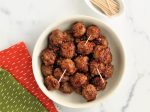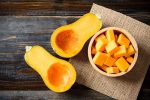Did you know that one of the side effects of the pandemic is weight gain?
“Pandemic Pounds” and the “Quarantine 15” are nicknames for the extra weight that many people have gained in the era of COVID-19.
After all, some of us might not be able to be as physically active. Parents are trying to help their kids with online schooling, while trying to work from home. Perhaps you’ve lost your job. Many gyms and fitness centers are closed or have limited capacity and tight restrictions.
We’re practicing social distancing. And staying home. On the couch.
Add staying healthy and avoiding contracting COVID-19 to the list, and we’ve been on stress and anxiety overload since March.
Our routines have changed, the refrigerator is (too) easily accessible. Snack food is right there in your kitchen. No need to put money in a vending machine like at work, as snacks are free and bountiful when working from home.
Since we’ve been wearing sweats or comfy clothing while working from home, the added pounds most likely weren’t noticed right away. It was when you tried to put on jeans and couldn’t get them zipped that you discovered a few unwanted pounds have snuck up on you because of between-meal snacking.
Getting your diet back on track
Americans typically gain one to two pounds per year.
A recent WebMD poll of 1,012 of their readers showed that 47% of women and 22% of men experienced weight gain due to COVID-19 restrictions. Most of the poll participants said their weight gain was relatively minimal, with 75% reporting a weight gain between one and nine pounds. Four percent of respondents reported that they gained more than 21 pounds and 21% said they gained between 10 to 20 pounds.
In the same poll, 59% of the participants blamed their weight gain on stress eating and a lack of exercise. Twenty-one percent said the weight gain was caused by drinking more alcohol.
How can you get your eating habits back on track?
Megan Horstman, store dietitian at
Hy-Vee’s Northwest Arterial location, said to start your day by fueling your body to ensure it has plenty of fiber, antioxidants, protein and healthy fats. This will help to curb your craving for a mid-morning snack.
“One of my favorites ways to start the day is to prepare Bob’s Red Mill 7 Grain hot cereal, with a tablespoon of peanut or almond butter, topped with cinnamon, vanilla, chia seeds, walnuts and blueberries,” she said.
It also is important to keep hydrated throughout the day. Horstman said that drinking water flavored with cucumber, mint and lime is refreshing and keeps you hydrated better than sugary soda.
With more families cooking meals at home since many restaurants are closed or offering limited seating or menu options, it’s time to learn how to cook some healthy meal selections.
Have a family taco or make-your-own pizza night using healthy ingredients.
Horstman also suggested creating a weekly meal plan.
“Look ahead to the next week, and create a menu for the week, develop a grocery shopping list, and set aside time to pre-prep meals on Sunday, before the week,” she said.
Horstman added that including fruit, nuts, seeds, fresh cut vegetables, salad kits and smoothie ingredients on the shopping list helps to ensure that healthy foods are readily available. You’ll reach for the healthy snacks instead of salty snacks.
Get up and move
Exercise always is important to help manage stress and lose weight.
Hy-Vee offers a free five-week KidsFit challenge that can be done as a family. Visit hy-veekidsfit.com for more information.
Now that fitness centers are reopening, many also are offering deals on memberships to bring customers back.
Establishing new habits is another way to get out of the rut you’ve fallen into during the pandemic. Get outside while the weather is nice, take a bike ride or a walk (while social distancing). Be a tourist in your town by doing a walking tour of the downtown area.
Whatever you do, stop reaching for the salty snacks.
Jill Carlson is a freelance writer from Madison, Wis.











